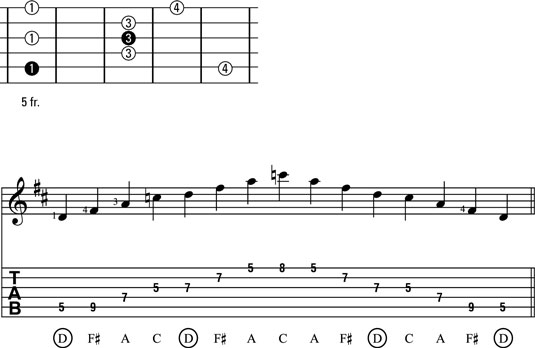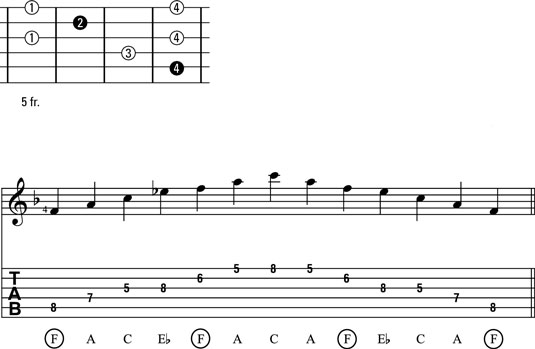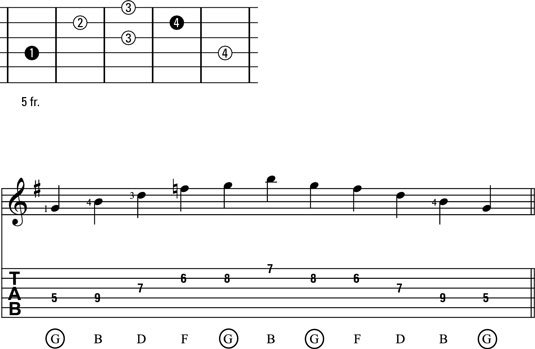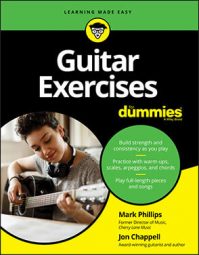An arpeggio is a chord whose notes are played one at a time instead of simultaneously. Seventh chords and arpeggios sound richer and more complex than basic major and minor chords, and they’re prevalent in many types of music, including jazz, pop, classical, rock, and blues.
You can derive a dominant seventh chord in different ways, but here’s how you should do it for now: Start with a major scale and play 1, 3, 5, b7. For example, in the key of C, if you play C, E, G, and Bb, you produce a C dominant seventh chord, or C7 for short.
As you work through the arpeggio exercises, play each one slowly, loudly, and deliberately at first. After you’ve practiced an exercise a few times, play it faster and lighter. No matter how you’re playing, however, be sure to maintain your starting tempo and dynamic level (loudness) throughout the arpeggio.
Dominant seventh chord arpeggio patterns #3, #4, and #5 span a bit less than two octaves. With fewer notes available in a position, you might consider these for shorter passages.
Dominant seventh arpeggio pattern #3
The following figure shows the neck diagram, music, and tab of dominant seventh chord arpeggio pattern #3 in the key of D. Two alternate fingering opportunities exist here:
Play the 4th string note with the 2nd finger, not the 3rd.
Play the 2nd string note with the 4th finger, not the 3rd, so you don’t have to use the same finger two times in a row.
Practice both alternate-fingering substitutions as well as the written fingering to ensure that you make an informed choice as to which of the four combinations you prefer.

Click here to download and print this arpeggio pattern.
The following exercise is in the key of E in 7th position. For ease of playing and to avoid the awkwardness that string-hopping creates, try using both alternate-fingering substitutions for this one.

Dominant seventh arpeggio pattern #4
On to dominant seventh arpeggio pattern #4, here in the key of F in 5th position. Notice that with this pattern, you have to play the first three notes on different strings. This makes the first half of the pattern a little trickier than the second.

Click here to download and print this arpeggio pattern.
When you’re ready for some practice, try the following 2nd-position exercise in rhythm. Try playing this exercise by holding down all your fingers except the 4th, including a 1st-finger barre across the top three strings. When you do this, only the 4th finger needs to move in order to play all the notes in the arpeggio.

Dominant seventh arpeggio pattern #5
Here's dominant seventh arpeggio pattern #5, in 5th position. This pattern poses some unusual uses for the 2nd, 3rd, and 4th fingers, and many players would play this using four alternate fingers (described in the following exercise). But for now, practice this pattern as written to get a feel for the way fingers 2, 3, and 4 would be used in a classic sense.

Click here to download and print this arpeggio pattern.
The following exercise shows dominant arpeggio pattern #5 in the key of A in 7th position. Play the first two notes with the fingerings as written (1 and 4). But then use the following fingerings, which are all deviations from the original:
2nd finger on the 3rd string
1st finger on the 2nd string followed by the 3rd finger on the 2nd string
2nd finger on the 1st string.


